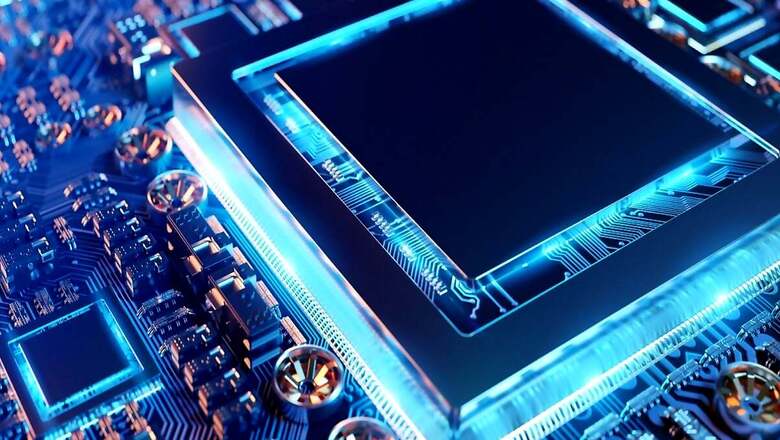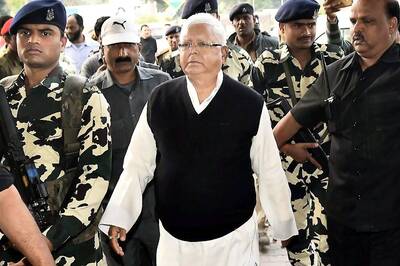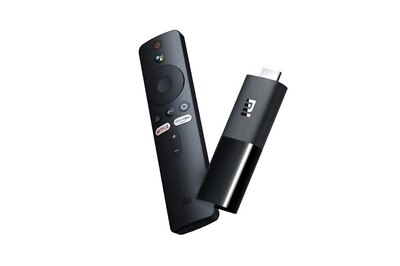
views
On the margin of the third Quad Leaders’ Summit in May 2022, US President Joe Biden and Indian Prime Minister Narendra Modi met in Tokyo. A readout was released by the White House which highlighted the major themes discussed by the two leaders while reviewing the progress of the US-India Comprehensive Global Strategic Partnership. One of the essential themes discussed was critical and emerging technologies where both the leaders launched iCET (Initiative on Critical Emerging Technologies) spearheaded by the National Security Councils of the two nation-states. Since then, iCET has been a topic of discussion with a lot of confusion around itself, among the security and defence experts, think tanks, journalists and industry representatives of both countries. This might be because of the scarcity of official information and resources available in the public domain released by the respective governments on the initiative.
The two countries, however, have been working closely in this direction with the inaugural meeting scheduled one year later at the end of January 2023 between the National Security Advisors of both countries. Subsequently, a fact sheet was released by the White House describing the domains on which the entire framework of iCET would be construed. Defence, semiconductors, space, quantum computing etc. would be some of the major domains where the two countries are planning to engage through multiple high-level meetings under the iCET in the coming times, as per the fact sheet. First in this line has been the visit of US Secretary of Commerce, Gina Raimondo to New Delhi in March 2023 and the subsequent signing of an MoU on the Semiconductor Supply Chain and Innovative Partnership under the framework of India-US Commercial Dialogue. The objective of this partnership is ‘to establish a collaborative mechanism between the two governments on Semiconductor Supply Chain resiliency and diversification in view of US’s CHIPS and Science Act and India’s Semiconductor Mission’. Experts perceive this partnership as a part of the “China-plus-one” strategy to counter the growing Chinese influence on the global semiconductor supply chain by providing a robust alternative. iCET could be a game changer in this direction after the much-anticipated multilateral efforts like “Quad’s Semiconductor Supply Chain Initiative” and “Chip4 Alliance” have not been able to produce desired outcomes.
Initiative on Critical Emerging Technologies (iCET)
The initiative first came to the headlines after the Biden-Modi meeting in Tokyo last year. The fact sheet released by the White House describes its aim as to elevate and expand strategic partnership and defence industrial cooperation between governments, businesses and academic institutions of two countries. Some consider iCET as a deal similar to the US-India Defence Technology and Trade Initiative (DTII) or the Indo-US Nuclear Deal of 2008, however, leading experts clarify that ‘it is a framework that electrifies the ability of the government, the private sector, and academia to deepen cooperation across a range of emerging technologies and there is a range of deals to be done across these technologies’.
iCET has had this mysterious clamour around it since the very beginning. One reason could also be the involvement of the National Security Councils of the two countries in this entire framework and the top-bureaucracy present in its inception meeting held in Washington DC in January 2023. High-level officials and bureaucrats from the Department of Space, defence, commerce, IT and the National Security Secretariates of both India and the US were present in the meeting and the discussions were unofficial in nature. The two sides discussed the opportunities for greater cooperation, co-development and co-production in the areas of quantum communications, semiconductor supply chains, defence, space etc. As per the Ministry of External Affairs (MEA) press release, iCET aims to build technology supply chains, develop standards, support the co-development and co-production of items and also, inter alia, a platform to resolve issues relating to regulatory barriers and export controls.
India’s Semiconductor Ecosystem
India’s burgeoning semiconductor market will reach from $27.2 billion in 2021 to $55 billion by 2026 with a Compound Annual Growth Rate (CAGR) of 19.7 percent, as per different reports. With the aggressive advancement in silicon technology, semiconductors are not only the DNA of the entire ICT framework but also have immense utilisation in aerospace, defence technology, automobile sector, clean energy and medical devices etc. Developments in other critical technologies like AI and quantum computing have further increased the dependency on advanced semiconductor research.
In terms of the consumer deliverables market, India is one of the biggest consumers of electronics goods. With the Indian government’s active push on ‘Digital India’ and digitisation of the economy along with increasing mobile phone penetration and growing IT infrastructure, the semiconductor supply chain ecosystem has become very prominent. The increased demand for high-end entertainment systems, mobile phones and laptops has grown multifold during the Covid pandemic crisis, resulting in rising demand for semiconductor devices in their production. However, global lockdowns had pushed many chip-manufacturing facilities in China and Taiwan to closure, thereby disrupting the global semiconductor supply chain. That was an eye-opener for many economies including India.
The Indian semiconductor market is predominantly import dependent on importers like Taiwan, China, South Korea, Singapore and Vietnam. Currently, India spends around $24 billion annually on semiconductor device imports. India imports Integrated Circuits (ICs) mainly from Taiwan, China and Japan because of the absence of manufacturing facilities or fab labs in the country. It also lacks any prominent domestic Integrated Device Manufacturer (IDM) that controls the entire semiconductor supply chain from design to production to marketing and sales. Indian companies are specialised in chip designing (also called “fabless” companies) and almost all the global chip giants design their chips in India through their fabless subsidiaries and send the prototypes to manufacturing units outside India. Every year, nearly 2,000 chips are designed by more than 20,000 Indian engineers, however, domestic fabless startups are still very nascent and are struggling in light of insufficient funding opportunities.
Moreover, India lags in the chip-manufacturing or setting up of ‘Fab units’ because of the lack of resources and a weak ecosystem. Semiconductor Fab units are highly capital-intensive and require huge investments. In addition to it, this industry requires large gallons of ultra-pure water, an uninterrupted power supply, dust and vibration-free facilities and a highly skilled workforce. To construct a 12-inch wafer plant that produces 90 nm chips with a monthly production capacity of around 50,000 wafers, the total cost required is around $2.4 billion. This cost would increase three times with the decreasing size of the chip.
Government of India’s Design Linked Incentive (DLI) scheme for 100 domestic companies and Production Linked Incentive (PLI) scheme with a sanctioned amount of $10 billion are some of the plausible steps taken to boost the semiconductor market. Setting up of “India Semiconductor Mission” and inviting global chipmakers for establishing fab facilities here could be the stepping stones for the chip manufacturing process. Currently, the Indian government has received Expression of Interest (EOI) proposals from some of the big chipmakers like Foxconn, International Consortium ISMC and Singapore-based IGSS etc, either directly or through a joint venture (JV) with an Indian firm to set up fab units in different parts of the country.
The United States has been very closely observing these developments in India and thus both countries have agreed to engage in bilateral dialogue outside Quad in the form of the iCET framework to boost the Indian semiconductor ecosystem and also to move away from Chinese dependency. The MoU signed between the two countries on Semiconductor Supply Chain resiliency is an important step and would send a strong signal to the global semiconductor market.
“Siliconpolitik” and decoupling with China
China, for the last half-decade, has been one of the major importers of semiconductor devices in India. In 2021-22, the total import from China was around $94 billion with a trade deficit of a whopping $73 billion. Out of the total imports, the maximum share was under HS 86 code (‘Electrical Machinery and Equipment and Parts thereof etc.’) with $30.2 billion in 2021-22. This increase in import was primarily because of the increase in import of semiconductor devices (come under this category, HS 8541), which increased to $6.6 billion in the given year. The data indicates the overdependency of India on the Chinese semiconductor market. During the pandemic crisis, this reliance resulted in low supply and increased demand because of the global lockdown and shutting down of several manufacturing facilities in importer countries.
As per the Semiconductor Industry Association (SIA), China’s share in global chip manufacturing and sales has increased multifold in the past 5 years and has surpassed Taiwan for two years in a row. In 2015, China’s semiconductor device sales were only 3.8 percent of the global chip sales, however, it has increased 10 times in the next 5 years with a CAGR of 30.6 percent capturing 9 percent of the global semiconductor market. SIA’s predictions signify that if a similar growth trajectory continues for the next three years, China’s global market share will reach 17.4 percent, just behind the US and South Korea.
Such aggressive development of the Chinese semiconductor industry in all four segments of the semiconductor supply chain- fabless, IDM, foundry and OSAT (Outsourced semiconductor assembly and test), and its rising control on the global semiconductor supply chain has thereby pushed like-minded countries to adopt “friend-shoring” as an appendage to their silicon diplomacy. The term was first used by US Secretary of the Treasury Janet Yellen in her speech to the Atlantic Council, describing the US and its allies coming together and limiting ‘the trade of key inputs to the trusted countries in order to reduce risks to the supply chain’ on which the latter rely. This also can be considered as a part of a larger China-plus-one strategy wherein firms are encouraged to expand their operations outside China. iCET’s framework on semiconductor supply chain resiliency, Quad’s Semiconductor Supply Chain Initiative and “Chip-4 alliance” are some of the groupings intended to provide suitable platforms to “decouple” China from the semiconductor supply chain.
India’s import surge with China, larger trade deficit and heavy reliance on semiconductor import, have raised concerns within the international community which considers India as their potential strategic partner in Asia. The alliances like Quad and I2U2 (India, Israel, the UAE and the US) where India is an active member, are fora envisaged to initiate decoupling with China. India’s national security issues especially the border dispute and the Government of India’s stance on pruning imports with China could also be a reason for India to look upon such groupings. The MoU signed between India and the United States on Semiconductor Supply Chain resilience as a part of iCET is again a fundamental ground for India to curb semiconductor imports from China and explore an active role in the global supply chain.
Conclusion
Indian semiconductor ecosystem is at a very preliminary stage with an absence of fabrication facilities, but there is a huge potential for ATMP (Assembly, Testing, Marketing and Packaging) facilities because of the availability of a huge skilled workforce. The iCET also focuses on increasing the R&D partnership between Indian top-research organisations like the Indian Institute of Technology (IITs) and specialised organisations alike in the US. Similarly, a partnership between Semiconductor Industry Association (SIA) and India Electronic and Semiconductor Association (IESA) on forming a private-sector task force on strengthening the collaboration between the two countries in the semiconductor ecosystem is a plausible initiative in boosting opportunities in the Indian semiconductor market. India’s membership in similar multilateral/bilateral fora and its continuous engagement in trade dialogues to advocate effective coordination and co-development in the semiconductor supply chain would help boost its domestic semiconductor industry thus, paving the path of self-reliance.
Vikrant Singh is Senior Resident Fellow at the Centre for Competition Law and Economics (CCLE); Siddharth Mishra is Public Policy Professional and External Consultant to CCLE. Views expressed are personal.
Read all the Latest Opinions here
















Comments
0 comment